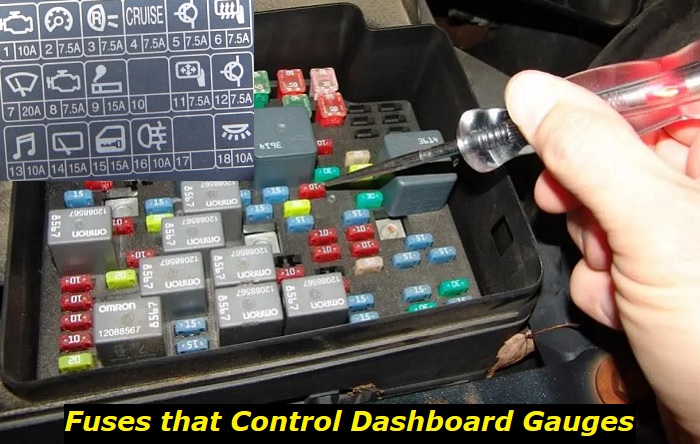There's nothing worse (at least in a petrolhead's mind) than getting into your car, starting it, and seeing that the dashboard looks like a fully lit Christmas tree. Airbag warning light, ABS warning light, check engine warning light?
Fuse problems highlights
- Level of urgency:medium
- DIY inspection:possible
- DIY repairs:possible
- Can you drive?yes, if it starts
- Price of repairs:$0 - $50
- Ifignored:certainequipment will not be working at all
- Ways to fix:test the fuses, replace the blown fuse

Before going any further, remember, if you feel uncomfortable troubleshooting your car's electrical system, we highly suggest you take it to your local specialist, since it can be very easy to short something out, break a wire or even fry one of your electrical modules, and then you're going to be in a world of pain.
Let's first talk about fuses. If you've clicked on this article, we are quite sure that you are familiar with what a fuse does, but let's do a quick recap anyway. Basically, the fuses are integrated into various circuits in your car in order to protect important electrical components from things such as surges of electricity.
When there's too much current that flows through a circuit, the fuse will blow and so the flow of electricity through that circuit will be stopped. Different circuits have different amperages (the rate that current flows through an electrical circuit, measured in Amps, often shortened to Amp or A).
This is very important to know, because you don't want to use any other fuse than what the fuse panel diagram of your car is telling you to use, no matter what anyone says.
Want to use a fuse with fewer Amps? It will blow from the moment current will flow through that circuit. Maybe you want to try a fuse with more Amps? Not a good idea, because when electricity will start flowing through that circuit, if you have a surge of electricity, for example, important things such as modules or ECUs will be fried and beyond repair, and, trust us, you don't want this to happen to you, since they can be very expensive to replace.
You have to bear this in mind because a specialist could charge you quite a lot to troubleshoot your electrical system because it's a very time-consuming thing to do.
Going back to our question of what fuse controls the dashboard gauges, the simple answer is many of them do. The first thing you'll want to do when checking your fuses is to check your car's fuse diagram, which is usually located on the fuse panel cover or in your car's owner's manual.
If you've bought your car used and somebody decided to keep these things as a nice memory of their ex-vehicle, don't worry, Google is always there to help you. Simply search for your car's make and model and fuse diagram and you'll most likely find exactly what you need.
The first fuse that you might want to check would be the one for the instrument cluster itself since that might be the root of your problems. If you replace it and your dashboard gauges have come back to normal, great! It was a very easy fix in this case and you're good to go.
If not, the issue might be elsewhere. Another thing that you could check before swapping your instrument cluster for another one, would be to check for continuity in its electrical circuit, because if there's a split wire somewhere, the only thing that changing a fuse and the cluster will do, would be to waste your time and money.
If there's continuity, the next thing to do would be to try and swap your cluster for another one and see if the problem persists.
Maybe you don't have a problem with the instrument cluster itself, but you still have some warning lights present. What should you do in this situation? The answer is simple. Have the system diagnosed and see which exactly problem causes these lights to flash. You can also check some other fuses first.
ABS warning light lit? Check the ABS fuse. Airbag light lit? Check the airbag fuse. Of course, there's more troubleshooting to be done in these situations, since these errors can mean you have a problem somewhere else, but in this article, we'll try and stick to fuses and we'll save the rest for another day.
Another thing that you should keep in mind is that different cars have different fuse panels. Some have fuses in the glove box, for example, or on the side of the dashboard, some also have fuses and relays in the trunk, so whenever you decide to check them, make sure that you don't miss any of them before coming to the conclusion that they're all good.
Another important thing is to make sure that both your battery and alternator are in perfect working order since they could cause all sorts of electrical issues whenever they're at fault and all the troubleshooting you're going to attempt will get you nowhere.
What's very important to understand is that there are so many variables in each situation that, if not taken into account, will make your life very hard and maybe make you quit trying to fix the problem. Whenever working on your car, especially on its electrical system, you need to prepare yourself with A LOT of patience, and we do mean it.
It is a very time-consuming process and that's why most specialists can charge you a lot of money to troubleshoot such issues. Just imagine that your tail lights don't work and the reason for them not working is a split wire somewhere under the carpet of your car. Think how much time it took the person to find where the issue was. A few hours? In a happy case.
To end on a happy note, there's no need to worry when your car acts up, as there's nothing that can't be fixed with a little bit of time and patience, and, of course, passion for what you're doing.
About the authors
The CarAraC research team is composed of seasoned auto mechanics and automotive industry professionals, including individuals with advanced degrees and certifications in their field. Our team members boast prestigious credentials, reflecting their extensive knowledge and skills. These qualifications include: IMI: Institute of the Motor Industry, ASE-Certified Master Automobile Technicians; Coventry University, Graduate of MA in Automotive Journalism; Politecnico di Torino, Italy, MS Automotive Engineering; Ss. Cyril and Methodius University in Skopje, Mechanical University in Skopje; TOC Automotive College; DHA Suffa University, Department of Mechanical Engineering






Add comment